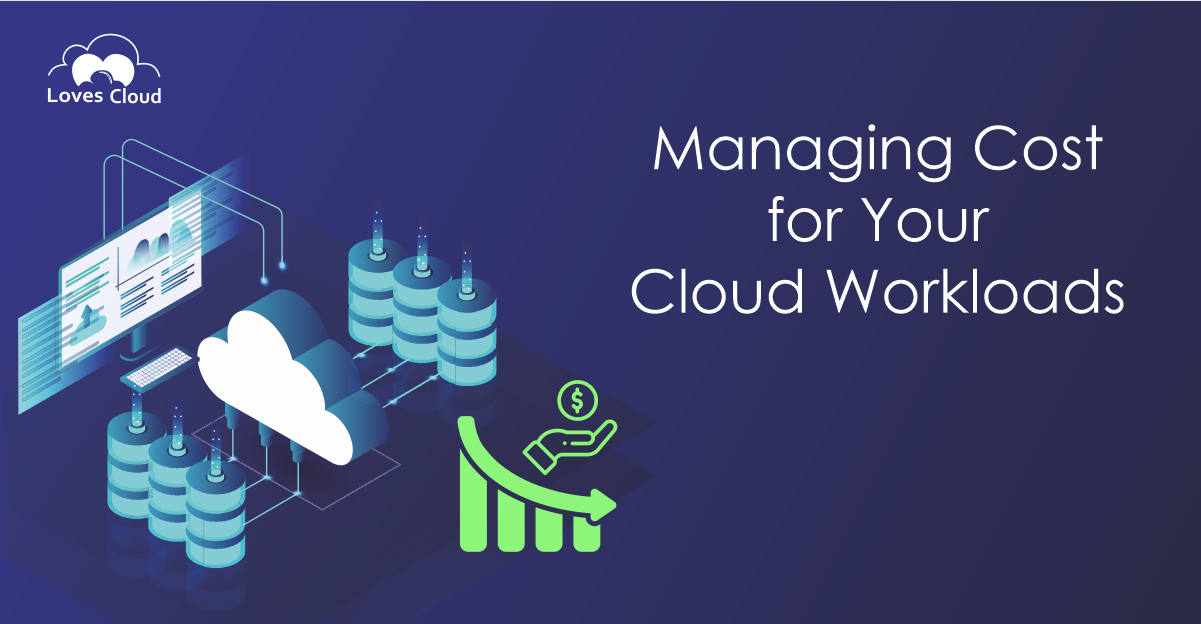
Managing Cost for Your Cloud Workloads
Managing cost for cloud workloads is a paradigm shift for most teams who’ve worked historically with a fixed price model for running all their workloads. With cloud leading the way for “Pay as you go” model by accruing cost of all resources consumed in a month, organizations and teams often find asking following questions among themselves:
- Is it normal to have this much cost for our workloads?
- How can we make the cost of our cloud workloads more transparent and predictable?
- Are we using cloud the right way?
- Should we use some tool to manage and optimize cost?
- Should we appoint someone to manage the cost?
- Should I enforce some processes in the organization to streamline cost management?
Cloud spend along with cloud security can be a deterrent for successful cloud adoption for your teams. We conducted a live webinar with senior cloud architects to go over typical challenges and solutions for cloud cost management. We also took plenty of live questions from the audience!
Let us look at some of the cloud features that might be a boon or bane depending on their usage:
- Pay as you go : This has to be the first one, isn’t it. While cloud aficionados swear by “Pay as you go” as one of the primary reasons for cloud adoption, there are plenty who’d say that they get nasty surprises with their cloud bill for exactly the same reason. Simply put, this feature is responsible for users provisioning cloud resources left, right and centre, without giving too much thought about the cost of those resources, because cost is an afterthought, thanks to “Pay as you go” model!
- Elasticity : The ability to provision virtually unlimited resources in the cloud takes its toll on cost management as well. This elasticity and availability of resources of all sizes and capacity often results in wastage of resources in the form of oversized and unused servers or storage resources. A retrospective and an audit for all resources provisioned surely helps in reducing wastage of cloud resources. Most enterprises have also introduced the role of “Cloud Economy Advisors” in their organizations to identify “true” cost of cloud and identify wastage along with cost optimization.
- Compute & Storage : Two-third of the cloud cost is attributed to compute and storage services. It is reported that almost all compute resources are provisioned one notch higher than it is actually required, resulting in an oversized resource. Moreover, most cloud platforms provide a vast choice of storage options, ranging from $4/TB/month to $300/TB/month and your choice of storage can make a big difference on your cloud costs.
- Cloud Management Tools : Most enterprises use third party tools to manage cost while startups and small and medium businesses mostly rely on in-house teams and architects to manage costs. However, the amount of cloud spend also tends to be a deciding factor. More the cloud spend, more the organization is inclined on using a tool for managing and optimizing cloud costs.
- Choosing Cloud Native Applications : Now, cloud certainly has its own shortcomings when working with certain types of application architectures, in terms of cost, performance, scalability etc. For instance, an application that runs a few times in a month is not an ideal candidate to be deployed on a server of its own, that runs throughout the month, all day and all night! Similarly, cloud platforms provide various compute options, ranging from containers, serverless along with discounted pricing for their servers. These options can be pretty handy in saving cloud costs for compute resources.
- Will Cloud Platforms Help with Cost Management? : To quote a famous wise man “Help will be given to those who ask for it” won’t be ironic in this context as cloud platforms provide plenty of options/services/features such as budgets, detailed billing reports, cost management modules etc. to manage costs. However, there is a catch! It’s not a piece of cake to decipher cloud costs, including a complex and different pricing model for their services, lack of trained workforce for cloud and ever evolving nature of cloud that introduces new services and even more pricing models to make things difficult for everybody to catch up!
Having said that, is cloud cost management going to get easy in time to come or is it going to be even more unmanageable? As cloud providers will keep on adding services, the governance and cost management will become even more complex. Cloud platforms are innovating at an enviable pace and we need to keep up with it for managing costs.
In this race of teams vs tools to manage cost for cloud platforms, tools will eventually win.
Connect with us at powerboard@loves.cloud to know more about our cloud management platform, PowerBoard. It is built by cloud specialists at Loves Cloud to simplify cloud management for teams, including cost, security, automation and governance.

